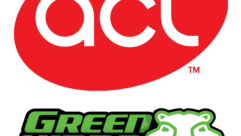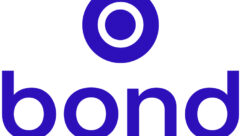Green AV Now
Jun 6, 2011 12:34 PM,
With Bennett Liles
Industry experts weigh in on the state of sustainable AV.
More on Green AV
10 Minutes With Project Green AV Founder & Director Gina Sansivero
Sustainable business practices have had time to mature and take root in the AV industry. We know the trend is here to stay, and the early idea shakeout has provided a clearer course for specific businesses to follow. Now we appear to be at the gear-shifting stage of the effort, and the editors of SVC thought it would be useful to step back for a moment and take stock of where we are and where we’re headed in this effort. Offering their comments on the topic are:
- John Gracyalny, sales and marketing director at Graybow Communications and an active member of the U.S. Green Building Council.
- Midori Connolly, CEO of Pulse Staging, which bills itself as the first sustainable AV staging company in the US.
- Max Kopsho, the newly appointed director of business development at Arrive Systems. Kopsho is responsible for sales, marketing, and operations for North and Latin America.
- Peter Pekurar, senior manager of Integrated Management Systems for Christie Digital, an ISO14001-certified global visual solutions company.
SVC: How significant a factor is LED technology in the green AV movement (lighting, projection, etc.)?
Gracyalny: LEDs provide more light energy output for the same amount of electrical energy input, while simultaneously producing less heat. They also can provide a very highly pure white color temperature that improves the color rendering index (CRI) of the light pool, allowing a wide spectrum of colors to be accurately represented. LEDs are finding their way into almost all applications where incandescent and discharge-type light sources have been used in the past. Also to be noted is the integration of diode-based laser technology as a light source in high-definition projectors (Casio). The extremely high intensity and color purity of this type of light source allows for less heat generation and promotes RoHS initiatives by eliminating some of the need for mercury-containing lamps. This is very important for reducing the cost to end-users and the amount of consumables they use such as replacement lamps, etc.
Connolly: Well, it really depends on the focus of the organization looking to become more green. If their emphasis is on reducing consumption, then yes, LED is certainly influential. However, sustainability is really about looking at the entire life cycle and composition of an overall system; plus how that system is manufactured, designed, managed, and then disposed of. Simply replacing lamps or bulbs with LED and calling it a day is not green AV.
Kopsho: LED is still some distance away when it comes to producing the same brightness such as Xenon and metal halide required to typically drive some of the high-performing projection systems, and it may be some time before it will be able to replace all other less-energy efficient technologies. While considering the impact of a lighting technology to energy consumption, we cannot ignore the more efficient role of building management systems, which can reduce the impact the energy consumption in a building significantly. Arrive Systems deals with a lot of the building management systems side of the house, and LED light sources are a major impact for sustainable design, but the control of all lighting and high power consumption devices ranks just as high. Yes, we do see the significance of LED technology impacting reduction in overall energy consumption, but without the managed control of these products, the impact will not be nearly as great.
How far up the supply chain are AV hardware manufacturers currently going in evaluating environmentally sound practices and materials?
Gracyalny: The goal here would be to have manufacturers increase usage and standards in RoHS-compliant components and materials as well as extend the useful life of their products with technology that spans the test of time and equipment reliable enough to last, thus making it greener. I think that the major AV manufacturers must face a similar struggle as the end-users who pay for green technology about potentially spending more money up front to develop responsible products for a market that doesn’t understand enough to demand them. From my years of selling electronics, I have always joked about “planned obsolescence,” the notion that manufactures purposely make their products fail in a period of 5 to 7 years or sooner so that the consumer is forced to buy another unit with new features. By extending the life of equipment, I would think this is a scary practice for manufacturers who make affordable, disposable technology for early adopters and equipment that becomes obsolete for those customers who don’t demand longevity.
Connolly: I’m really impressed here! From ISO14001 certification to more take-back programs to LCA (life cycle assessments), I’m seeing manufacturers sit up and take notice—sometimes because of regulation but also as an interest in better business practices. I think what they’ve discovered is that when you work on energy efficiency or purchasing responsibly, you actually become more innovative and efficient as a manufacturer. An interesting trend that we’re seeing now is the concept of “nearsourcing” rather than immediately looking for manufacturing capabilities offshore. It’s similar to the buy local/buy organic concept in food. In the case of manufacturing, for small and medium-sized enterprises (SME) and smaller-run manufacturers, offshore manufacturing initially appears cheaper for labor and parts … but then the inability to closely monitor that outsourced production can equate to devastating losses in quality and production deadlines. I think we’ll see more and more manufacturing brought back to local facilities in the coming years. And that equates to the magic equation of sustainability: good for the planet, good for people, good for profit.
Kopsho: The true significance of “green” is when the product’s entire lifecycle is green from cradle to grave. Often we take energy consumption as a direct factor of something being “green” or “not green,” but the real significance of a technology to be green starts from its energy efficiency in the manufacturing practices and processes, logistical impact during transportation from the factory to its final user destination, operational efficiency during its beneficial lifetime, and the fact that when it needs to be retired, it will go back to being reused, recycled, or become biodegradable without polluting landfills. Arrive Systems starts very high in the chain of green and has addressed all these factors in the design, manufacturing, logistics, and end-of-life cycle. We have to not only look at the products and components we source from, but we must look at the practices these companies implement to get these products to market. Many of our customers are government and education facilities, and they require us to prove our environmental practices and in doing that, we must include our vendor selection process as part of that proof. I think the bigger challenge will be to find integrators and channel partners that are using the same important practices, but the good news is those are the partners that will be around for the long haul.
Pekurar: Christie’s supplier selection process includes a detailed review of a supplier’s management system and provides preferential selection for suppliers who have adopted sound environmental practices. Working with a supplier that has attained ISO14001 registration through an independent third-party audit gives you the confidence that you are dealing with a company with a sound environmental action plan. Many manufacturers were impacted by RoHS, but in the global marketplace, rapidly changing environmental regulations will be the norm going forward. Incorporating good green practices also means that you’re reducing risk by actively monitoring regulations and incorporating charges to your products early on to ensure they are compliant.
Green AV Now
Jun 6, 2011 12:34 PM,
With Bennett Liles
Industry experts weigh in on the state of sustainable AV.
More on Green AV
10 Minutes With Project Green AV Founder & Director Gina Sansivero
What does a company in the AV industry do to achieve ISO 14001 certification? What’s the trend?
Gracyalny: There are a few manufacturers that I know of that have done this. The only one I can think of that we integrate regularly is Middle Atlantic. We also often recommend using Material Processing Corporation (MPC) that uses a strict 100-percent zero-landfill policy for recycling. MPC is ISO 14001 because it is their business to be. I’m not sure and do not think any integrators are currently ISO 14001 certified. I think unless there is a major incentive to become so, maybe driven by the industry, then the trend will be to work toward the certification through common sense responsibility.
Connolly: The trend is for industries to develop their own certifications that are more appropriate for their specific practices and procedures. Right now, in the staging industry, we’re seeing the development of ISO 20121, an environmental management system (the EMS being an integral part of 14001) for meetings and events … which will be inclusive of AV staging. There are the new STEP guidelines being released from Infocomm.
Kopsho: The ISO 14000 family addresses various aspects of environmental management. The very first two standards, ISO 14001:2004 and ISO 14004:2004 deal with environmental management systems (EMS). ISO 14001:2004 provides the requirements for an EMS and ISO 14004:2004 gives general EMS guidelines. The other standards and guidelines in the family address specific environmental aspects, including labeling, performance evaluation, life cycle analysis, communication, and auditing. ISO 14001:2004 does not specify levels of environmental performance. If it specified levels of environmental performance, they would have to be specific to each business activity, and this would require a specific EMS standard for each business. That is not the intention.
The intention of ISO 14001:2004 is to provide a framework for a holistic, strategic approach to the organization’s environmental policy, plans, and actions. ISO 14001:2004 gives the generic requirements for an environmental management system. The underlying philosophy is that whatever the organization’s activity, the requirements of an effective EMS are the same and are not particular to the AV industry.
This has the effect of establishing a common reference for communicating about environmental management issues between organizations and their customers, regulators, the public, and other stakeholders.
Currently the ISO 14001 certification is voluntary and that means that a company in the AV industry has to make a conscious corporate decision to lead the effort. I do see that the trend is on the rise toward this. I know as an AV manufacturer we are looking at this very closely. At this point, it is more important to implement green technologies and a green corporate approach and soon we will match that to the guidelines in the ISO certification.
Pekurar: ISO14001 is a voluntary standard, which Christie sees as an important aspect of being a good corporate citizen. Attaining ISO14001 requires significant management support to review the organization’s products, activities, and services by identifying aspects of the business that may impact the environment. Christie then institutes measures to reduce or eliminate the risk. One has to have a broad look at business practices and determine the impact to customers, suppliers, and the entire environmental product life cycle. ISO14001 is a continuous improvement standard, which requires constant learning, improvement, and investment. Supporting initiatives within the AV community is a great way to get involved. Learn about the STEP rating system and the many AV initiatives including the upcoming InfoComm/ANSI Energy Management Standard.










